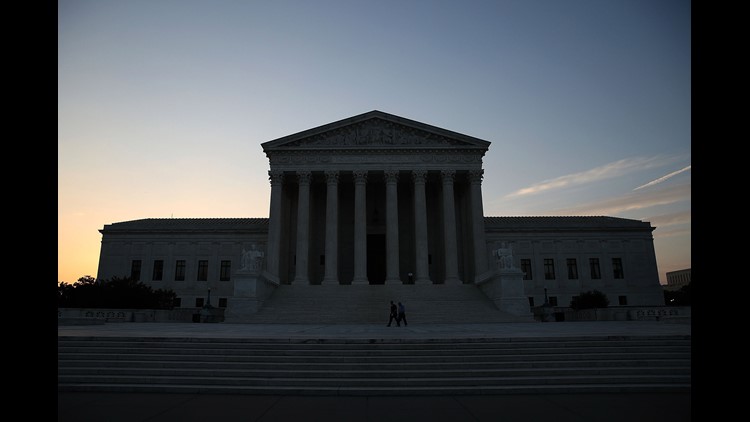The Supreme Court agreed Monday to hear a potential landmark case that addresses how far lawmakers can go in choosing their voters, rather than the other way around.
Venturing into what one justice recently called the "always unsavory" process of drawing election districts for partisan advantage, the court will try to set a standard -- something it has failed to do in the past.
The case under review comes from Wisconsin, but about one-third of the maps drawn for Congress and state legislatures could be affected by the justices' ruling. Similar cases are pending in North Carolina and Maryland.
The issue is reaching the high court at a time when both Republicans and Democrats have improved the art of drawing congressional and legislative maps to entrench themselves in office for a decade at a time. Computer software increasingly helps them create safe districts for their most conservative and liberal candidates, whose success invariably leads to more partisan gridlock in government.
“Partisan gerrymandering of this kind is worse now than at any time in recent memory," said Paul Smith of the Campaign Legal Center, who will argue the case next fall. "The Supreme Court has the opportunity to ensure the maps in Wisconsin are drawn fairly, and further, has the opportunity to create ground rules that safeguard every citizen’s right to freely choose their representatives.”
The court recently struck down some congressional and state legislative districts in North Carolina because they used voters' racial composition to maximize Republicans' political advantage. The court has ruled similarly on Virginia and Alabama racial redistricting plans.
Now, however, the Wisconsin case will confront the high court with raw politics, not race. The state is one of several battlegrounds where Republicans and Democrats fought to a virtual draw in last year's presidential election, but where Republicans enjoy election districts that have given them a nearly 2-to-1 advantage in the state Assembly.
The situation is similar in Florida, Michigan, North Carolina, Ohio, Pennsylvania and Virginia, where lines drawn by Republicans have given the GOP the lion's share of the seats in Congress and state legislatures. North Carolina's congressional delegation tilts 10-3 Republican. Michigan's state Senate has 27 Republicans, 11 Democrats. In Virginia, where President Trump lost handily, Republicans have 66 of 100 seats in the House of Delegates.
Democrats do likewise where they control the line-drawing process, such as in Illinois, Maryland and Massachusetts. But they have all the levers of power in just six states; Republicans control 25 states, with 197 of the 435 seats in the House of Representatives.
As a result, congressional lines have become ever more partisan in recent years. In 2012, Republicans won 53% of the vote but 72% of the House seats in states where they drew the lines. Democrats won 56% of the vote but 71% of the seats where they controlled the process.
A federal district court in Wisconsin ruled 2-1 in November that election districts drawn by Republicans discriminated against Democratic voters "by impeding their ability to translate their votes into legislative seats." It demanded that the legislature draw new district lines by this November.
The state asked the Supreme Court to block that requirement on the assumption that the justices would hear its appeal in the 2017 term, which begins in October.
In three landmark cases from 1962, 1986 and 2004, the high court has retained a role for itself to review partisan gerrymandering but has never defined how much is too much. In the last case, four justices sought to curtail that role by declaring it a political question outside their jurisdiction. But Justice Anthony Kennedy, 80, would not go that far; he may be the swing vote in the new case -- if he doesn't retire over the summer.
Two years ago, the court ruled that states can try to remove partisan politics from the process by creating commissions to take the job away from legislators. Kennedy joined in that narrow ruling by Justice Ruth Bader Ginsburg, who noted in her opinion that Kennedy previously labeled partisan gerrymanders "incompatible with democratic principles."
Even justices who favor giving lawmakers discretion to draw district lines hold their noses when it comes to how they do it.
"Partisan gerrymandering is always unsavory," Justice Samuel Alito wrote in a dissent from the ruling against North Carolina's use of race. But "while some might find it distasteful, our prior decisions have made clear that a jurisdiction may engage in constitutional political gerrymandering."
What's different this time from past Supreme Court clashes is the existence of data-driven models to measure election results against other factors. One such standard — dubbed the "efficiency gap" — counts the number of "wasted" votes for winning candidates in districts purposely packed with the opposition party's voters, as well as for losing candidates in districts where those voters were purposely scattered.



